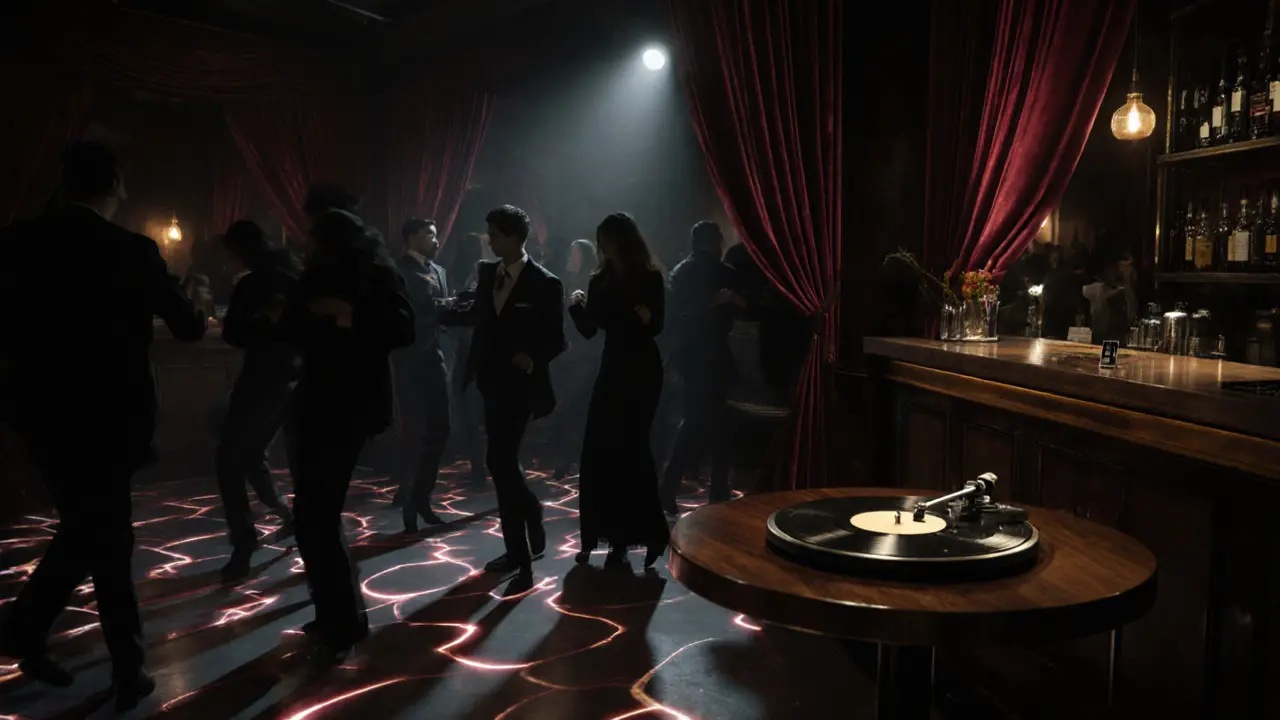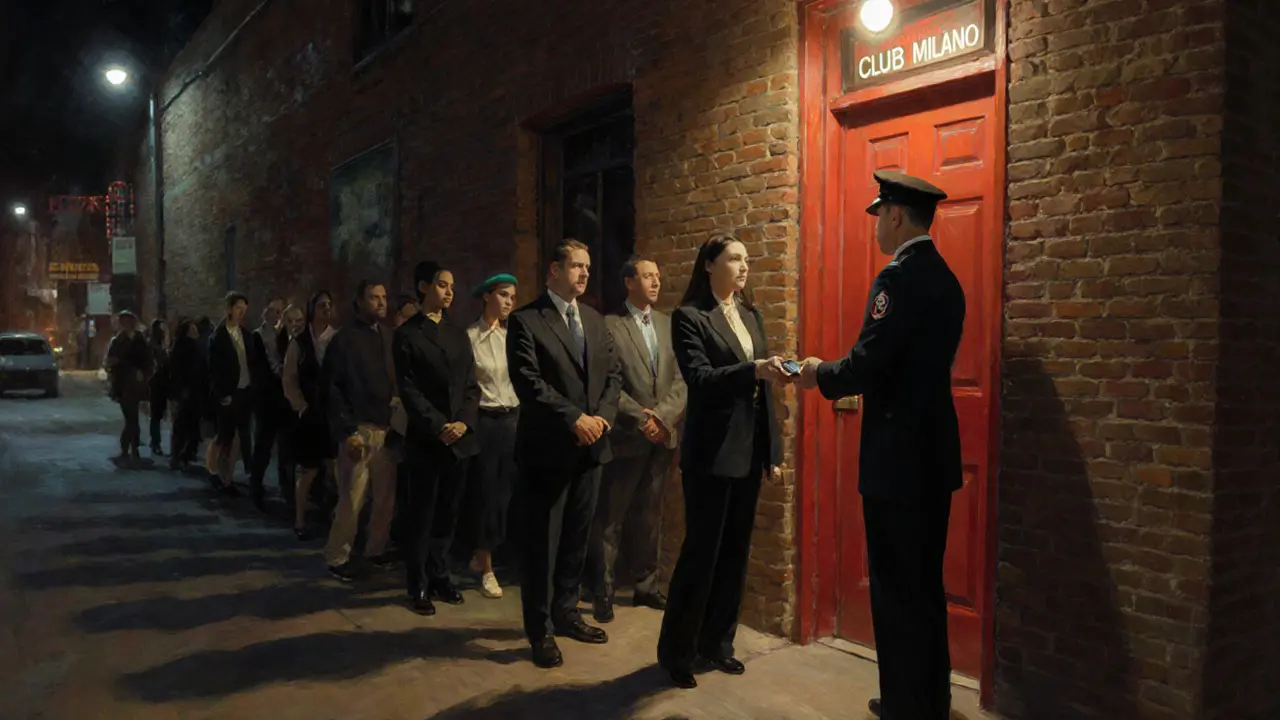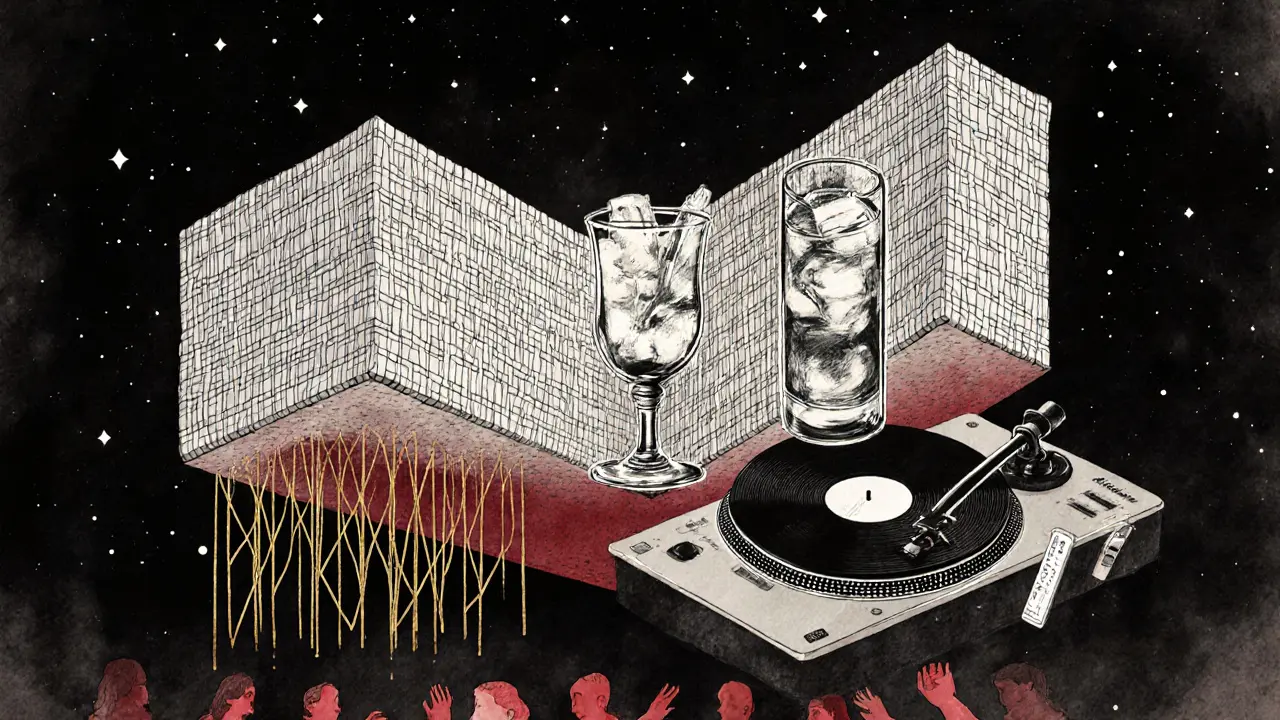The Club Milano - What’s the Buzz About? Inside the Legend of Milan’s Most Controversial Nightspot

Club Milano doesn’t just host parties-it defines them. Since the late 1970s, this name has echoed through Milan’s underground scene like a whispered secret, then a shout, then a legend. You’ve heard the stories: celebrities slipping in after midnight, VIP rooms that cost more than a month’s rent, bodies moving under strobe lights like they’re part of some ancient ritual. But what’s real? And why does this place still matter in 2025, when every city has a trendy club with neon signs and DJ playlists curated by algorithms?
It’s Not Just a Club-It’s a Cultural Artifact
Club Milano opened in 1978 in a converted warehouse near Porta Genova. Back then, Milan was waking up from post-war austerity. Disco was exploding, fashion was turning rebellious, and the city’s elite started mixing with artists, models, and provocateurs. Club Milano became the melting pot. It didn’t care if you were a Ferrari heir or a punk poet from Bologna-as long as you had style, energy, and didn’t wear sneakers. The bouncers didn’t check IDs. They checked vibes.
By the 1990s, it had become the epicenter of Italy’s sexual liberation movement. The club’s infamous ‘Red Room’ wasn’t just a private area-it was a statement. No cameras. No rules. Just raw human connection under velvet curtains. That freedom drew global attention. Madonna visited in 1992. David Bowie dropped by unannounced in 1997. The Italian press called it ‘the temple of desire.’
Today, Club Milano still operates in the same building. The walls are older. The speakers are digital. But the energy? It hasn’t changed. People still come not just to dance, but to feel something real in a world that’s increasingly curated.
Who Goes There? It’s Not Who You Think
Forget what Instagram says. Club Milano isn’t filled with influencers doing selfies in front of the bar. The crowd is a mix: Milanese designers in tailored black, retired opera singers who still dance like they’re 25, young artists from the Brera district, and older men in linen shirts who remember when the club had no name, just a red door and a single light.
Women dominate the floor-not as accessories, but as leaders. Many come alone. No group. No agenda. Just the music and the movement. There’s no ‘girls night out’ section. No VIP bottle service queues. You don’t pay to be seen-you pay to disappear into the rhythm.
The dress code? Strict, but not in the way you’d expect. No hoodies. No sneakers. No logos. No jeans unless they’re perfectly ripped and vintage. You’re expected to dress like you’re going to a private gallery opening, not a nightclub. That’s the rule. Not because they’re elitist, but because they’ve seen too many people try to fake it. Authenticity is the only currency.
The Music: No Playlists, No Algorithms
Club Milano doesn’t use Spotify playlists. Ever. The DJs aren’t hired from booking agencies. They’re chosen by the owner, Marco Vittori, who’s been running the club since 1985. He listens to demos. He watches how people move when the music plays. He doesn’t care if you’re famous. He cares if you make people forget they’re standing still.
Expect a blend: deep house from Berlin, rare Italo disco from 1983, ambient techno from Tokyo, and the occasional live saxophone solo that nobody planned. The sound system? Custom-built by a retired engineer from Bologna who used to work for La Scala. It’s not the loudest club in Milan-but it’s the most immersive. You feel the bass in your ribs before you hear it.
There’s no EDM drops. No trap remixes. No TikTok trends. If you came for that, you’ll leave confused. But if you came to lose yourself in sound that doesn’t follow trends-you’ll stay until sunrise.

The Rules: No Photos, No Phones, No Exceptions
This is the part people talk about the most. Phones are banned. Not discouraged. Banned. At the door, you hand over your phone to a staff member. You get a numbered token. You get it back when you leave. No exceptions. Not for influencers. Not for celebrities. Not even for the owner’s daughter.
Why? Because Club Milano is one of the last places in the world where you can be completely anonymous. No one knows who you are. No one cares. You’re not a follower. You’re not a brand. You’re just a body moving to music, in the dark, with strangers who might never remember you. That’s the magic.
There’s no Instagrammable wall. No branded cocktail named after a DJ. No photo ops. Just dim lighting, mirrors that reflect movement, and a bar that serves gin and tonic with a single ice cube-no garnish, no fuss. The bartenders know your name after two visits. Not because they’re friendly. Because they notice who stays.
Is It Worth It? The Real Cost
Entry is €35 on weekdays. €50 on weekends. That’s not cheap. But you’re not paying for a drink. You’re paying for access to a space that doesn’t exist anywhere else. The cover includes one drink. After that, cocktails are €18. Beer is €12. Water is free. You don’t need to spend more.
There’s no VIP table reservation system. You can’t book ahead. You show up. You wait in line. Sometimes it’s 20 minutes. Sometimes it’s two hours. The line itself is part of the ritual. People talk. People flirt. People decide whether they really want in. That filter keeps the crowd real.
Most clubs charge extra for bottle service. Club Milano doesn’t even have bottle service. There’s no ‘table’ to sit at. Just a long bar, a few couches in the back, and the dance floor. You don’t sit and watch. You join.

What’s Changed? What Hasn’t
Yes, the lighting is LED now. Yes, the sound system is digital. Yes, the club has a website (clubmilano.it)-but you won’t find any photos of the interior. No videos. No Instagram feed. The site only lists opening hours and the dress code.
What hasn’t changed? The silence between songs. The way the lights dim when the music fades. The fact that you can still walk in at 3 a.m. and find someone playing a 1979 vinyl on a turntable in the corner, just because they felt like it.
Other clubs copy the aesthetic. None copy the soul. Club Milano doesn’t market itself. It doesn’t need to. It survives because people who’ve been there tell others-quietly, in person, over coffee, not on social media.
Should You Go?
If you’re looking for a night out with loud music, flashing lights, and a chance to post a story-go somewhere else.
If you want to feel what it’s like to be completely present, surrounded by people who aren’t performing, dancing to music that moves you without asking for your attention-then yes. Go.
Wear something that feels like you. Leave your phone behind. Arrive after 11 p.m. Don’t expect to know anyone. And don’t try to capture it. Just let it happen.
Because Club Milano isn’t about being seen. It’s about being felt.
Is Club Milano still open in 2025?
Yes. Club Milano is still operating at its original location in Milan, open Thursday through Sunday nights from 11 p.m. to 5 a.m. It hasn’t changed ownership since 1985 and continues to operate without online reservations, social media promotion, or branded events.
What’s the dress code at Club Milano?
No sneakers, no hoodies, no logos, and no jeans unless they’re vintage and perfectly torn. Men should wear tailored shirts or blazers. Women should dress like they’re going to an art opening-elegant, intentional, no casual wear. The rule isn’t about wealth-it’s about authenticity. If you look like you’re trying too hard, you won’t get in.
Can I take photos inside Club Milano?
No. All phones are collected at the door. You’re given a numbered token to retrieve your device when you leave. This rule has been strictly enforced since the early 2000s. The club believes privacy is essential to the experience. Even staff members don’t take photos.
How much does it cost to get into Club Milano?
Entry is €35 on weekdays and €50 on weekends. The cover includes one drink. After that, cocktails are €18, beer is €12, and water is free. There’s no VIP table service, no bottle packages, and no reservations. You show up, wait in line, and pay at the door.
Who are the DJs at Club Milano?
The DJs aren’t booked through agencies. Owner Marco Vittori personally selects them based on how they make people move-not their fame or followers. Many are local underground artists, former musicians, or even architects who DJ on weekends. You won’t find names like Martin Garrix or David Guetta. You’ll find people who’ve never played anywhere else.
Is Club Milano only for wealthy or famous people?
No. While celebrities have visited, the crowd is mostly locals-designers, writers, teachers, students, retirees-who value the atmosphere over status. The club doesn’t recognize fame. It recognizes presence. If you’re there to be seen, you’ll feel out of place. If you’re there to disappear into the music, you’ll fit right in.
Why does Club Milano have no social media presence?
The club believes social media kills the experience. No posts, no stories, no hashtags. The only online presence is a bare-bones website with opening hours and dress code. Word of mouth is the only marketing. That’s how it’s stayed authentic for 47 years.

Deepak Raj Aryan
November 2, 2025 AT 11:13Man this place sounds like a cult but I’m into it
Sophie Kerr
November 2, 2025 AT 13:41Authenticity is just a marketing tactic for people who can’t afford to be trendy.
Sean Phoenix
November 3, 2025 AT 00:40Let me guess - the ‘real’ crowd is just rich kids pretending to be rebels while the owner’s got hidden cameras and sells your data to the government. No phones? Sure. That’s how they keep you docile. You think you’re free but you’re just another data point in a velvet-walled algorithm.
They don’t want you to post because they know if you saw what really goes on in the Red Room - the secret contracts, the bribes to the mayor, the celebrity blackmail tapes - you’d never go back. Or worse - you’d go back and tell everyone.
And don’t even get me started on the ‘retired engineer from Bologna.’ That’s not a guy - that’s a front for a NATO sonic weapon prototype. They don’t just play music - they modulate your brainwaves. That’s why you feel ‘immersed.’ You’re being subtly reprogrammed.
And the dress code? That’s not about authenticity - it’s a class filter. They let in the right kind of white people who wear ‘vintage’ jeans but still have trust funds. The real artists? The ones who actually make stuff? They’re locked out. This isn’t a club. It’s a gated cultural theme park for the nouveau aristocracy.
And the ‘no photos’ rule? Please. They’re using facial recognition. Every face you walk in with gets tagged, logged, and sold to fashion brands who want to know who’s ‘cool’ before they even launch a collection.
It’s not magic. It’s manipulation. And you’re all just part of the show.
Erika Hernández
November 3, 2025 AT 07:29Sean… you’re terrifying me… but also? I want to go so bad.
There’s something sacred about a place that refuses to be captured. In a world where every moment is staged for likes, Club Milano feels like the last breath of real human connection.
I’ve danced in clubs where the music was loud but the soul was silent. This? This sounds like the opposite. Like walking into a cathedral where the hymn is played on a 1983 Italo disco track and everyone’s crying but no one knows why.
I don’t need to post it. I just need to feel it. And maybe… that’s enough.
vincent ngeso
November 5, 2025 AT 00:16Man I read that whole thing and I just sat there in silence
It made me think about how we lost the ability to just be
Not perform not post not prove just be
I used to go to a place like this in Austin back in 2008
No name no sign just a door with a red light
People danced till dawn and no one knew each other's names
That's what this is
Not a club a feeling
And yeah I'd wait two hours in the cold just to feel that again
Hanna Holmberg
November 6, 2025 AT 18:47Okay I’m going to break this down for everyone because this is a MASTERCLASS in cultural preservation
First - the phone ban? That’s not just a rule - it’s a radical act of resistance against the attention economy. We’ve been conditioned to document our lives instead of living them. Club Milano says: ‘You are not a content creator. You are a human being.’
Second - the dress code? It’s not elitist - it’s anti-consumerist. No logos means no brand worship. No sneakers means no lazy conformity. You’re not paying to look rich - you’re paying to look like YOU - the real you. The version of you that doesn’t need validation from strangers online.
Third - the DJs? They’re not algorithms. They’re curators of emotion. Marco doesn’t care about Spotify stats - he cares about whether someone’s hips move when the bass hits. That’s art. That’s soul. That’s what’s missing from every ‘trendy’ club in every city.
Fourth - the line? That’s the filter. The people who show up? They’re not there because it’s Instagram-famous. They’re there because they’ve heard whispers. They’ve felt it in their bones. They know: this is rare. This is sacred. This is disappearing.
Fifth - the lack of social media? Genius. Because if you have to hear about it from a friend over coffee - then you’re already part of the tribe. No algorithms. No influencers. Just human-to-human transmission. That’s how legends survive.
And yes - €50 is steep. But what are you paying for? A drink? No. You’re paying for 6 hours of anonymity. For the chance to be forgotten. For the silence between songs. For the feeling that you’re not just dancing - you’re remembering who you were before the world told you who to be.
Go. Leave your phone. Wear something that makes you feel alive. And if you cry on the dance floor? Good. That means it worked.
Keily sophie
November 8, 2025 AT 13:03Oh please. This is just a glorified nostalgia trap with a €50 entry fee and a self-congratulatory PR campaign wrapped in velvet curtains.
‘No phones’? So you’re saying the only people who can afford to go here are those who don’t need to document their lives because they already have social capital? That’s not authenticity - that’s exclusion dressed up as rebellion.
And ‘no logos’? Tell that to the people wearing €1,200 vintage jeans from a boutique in SoHo that just launched a ‘Club Milano Collab’ collection last week.
And don’t get me started on ‘Marco Vittori’ - the sole arbiter of taste? That’s not a DJ selector - that’s a gatekeeper with a god complex. He’s not choosing music - he’s curating a cult.
Real underground culture doesn’t need a website. It doesn’t need to be ‘discovered.’ It just exists - quietly, anonymously, without fanfare. But this? This is the opposite. It’s performative secrecy. It’s a luxury brand selling the illusion of rebellion.
It’s not magic. It’s marketing. And you’re all just paying to be told you’re special.
Matthew Lukas
November 9, 2025 AT 04:04Keily, you’re right to be skeptical - but you’re mistaking critique for cynicism.
There’s a difference between exclusivity as a tool of control and exclusivity as a byproduct of integrity.
Club Milano doesn’t market itself because it doesn’t need to. It doesn’t have a social media team because it doesn’t want one. That’s not a facade - it’s a principle.
Yes, people wear expensive clothes. But they’re not wearing them to impress - they’re wearing them because they care about craftsmanship. That’s not elitism - it’s appreciation.
And yes, Marco chooses the DJs. But he doesn’t choose based on fame - he chooses based on feeling. That’s not a god complex - that’s curation.
The phone ban isn’t about keeping people out - it’s about letting people in. Real in. Not as followers. Not as influencers. As humans.
You want real underground? It doesn’t shout. It whispers. And it doesn’t need your validation to exist.
Maybe the problem isn’t Club Milano.
Maybe it’s that you’ve forgotten how to be still.
Shaun Chooi
November 10, 2025 AT 00:17I’ve been to places like this - in Berlin in ‘99, in Tokyo in ‘05, in Mexico City in ‘13
They all died because they got famous
But this one? It’s still here
Why?
Because it doesn’t want to be saved
It wants to be felt
And if you’re reading this and thinking ‘I should go’ - then you already know you’re one of them
Don’t overthink it
Just go
Leave your phone
Wear what you love
And dance like nobody’s watching
Because for once - nobody is
Aradhana Agarwal
November 11, 2025 AT 12:55I’m from India and I’ve never been to Milan
But I cried reading this
Not because I want to go
But because I miss the places I used to go where no one asked for my name
Where music was the only language
Where the night didn’t end - it just… faded
Thank you for writing this
It felt like a letter from my past
Matthew Lukas
November 12, 2025 AT 19:24Aradhana - your comment just reminded me of something I forgot
Real places don’t need to be visited to be remembered
They live in the people who carry them
Even if you’ve never been to Club Milano
You’ve already been there
Because you still know how to feel